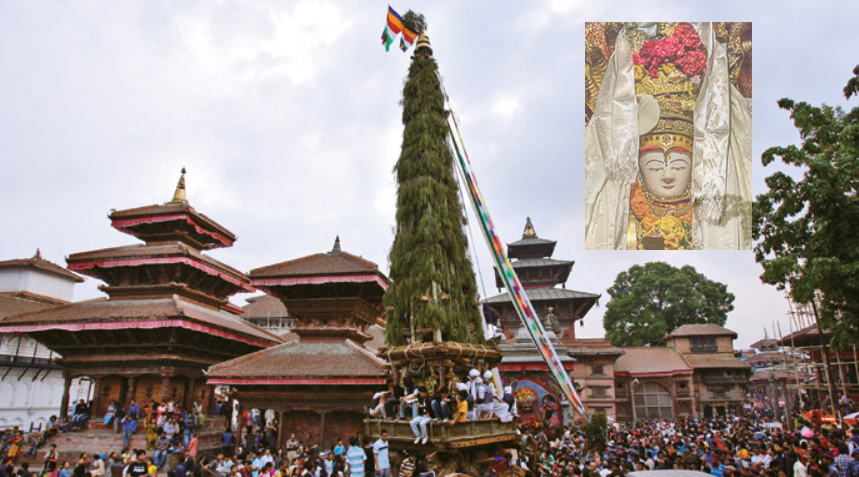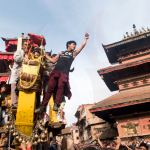In the vicinity of Asan and Indrachowk in Kathmandu, stands the Janabaha Dya temple, a historical landmark established in the 10th century. This temple venerates the compassionate deity Janabaha Dya, also known as Machhindranath or Avalokitesvara, symbolizing complete divinity and associated with the lotus flower in Sanskrit symbolism. The facets of Bodhisattva embody the essence of Avalokitesvara.
Embedded within the ancient fabric of Kathmandu’s civilization is the tradition of Seto Machhindranath, an embodiment of Avalokitesvara, among various other ancient customs and processions. Machhindranath, envisioned as the deity who watches over and reciprocates the love of devotees, has been revered since the 6th century, with its procession gaining prominence from the 17th century onwards.
Commencing on the eighth day of Chaula in the sixth month of Nepal Samvat and concluding on the tenth day, the annual procession of Seto Machhindranath involves the ceremonial transport of the deity’s statue in a chariot.
Legend has it that the white-skinned, half-closed-eyed deities directed King Yaksha Malla to construct a temple for them in Kalimati and Bagmati, promising prosperity and longevity to the kingdom’s inhabitants. This directive, commencing on the eighth day of the month of Chaitra, marks a three-day festival harking back to the era of King Yaksha Malla.
Interestingly, while the journey’s origin may date back to the month of Poush, it officially begins on the eighth day of Shukla Paksha in the month of Poush. The chariot of Machhindranath undergoes purification with milk, ghee, and other sacred substances, with the participation of the living goddess Kumari. The chariot, prepared in the month of Poush, is then utilized in the Chaitra procession, symbolizing continuity and reverence across time.



